A lot of us know that SEO can be a brilliant way to generate traffic for a website.
However, for some of us, search engine optimization might be our only means of traffic and increase search results.
This can be a bad thing.
It is essential that you know how to diversify the traffic that is coming to your website, and not rely entirely on search engine optimization. Otherwise, if your primary traffic source fails you, it could mean the end for your business.
In this post, we’re going to take a look at how you can increase website and blog post traffic without having to rely only on SEO.
We’ll look at a variety of strategies that you can put into place right now and also how you can optimize each source of traffic.
By the end of this post, you’ll have the peace of mind needed to know that your website isn’t going to crash and burn, just because of a change in Google’s algorithm.
Let’s begin!
Is all traffic equal?
Before we begin, I just want to remind you that not all traffic on your website is equal. You want high quality web traffic.
High quality traffic that is laser targeted is going to generate a better ROI than traffic that is not.
Now while that might sound obvious, it is something that can be easily overlooked when trying to drive traffic to your website.
High traffic numbers can be a great thing, but if the traffic isn’t targeted, the numbers are just vanity metrics.
This is something to keep in mind as we explore the topic of increasing traffic to your site.
1000 untargeted visits is not the same as 100 targeted visits working to drive traffic that sells. A social media platform might produce web traffic but it might not be high quality for your website.
Yotpo gathered data from 65 million e-retail orders accounting for $2 billion dollars in transactional value from 120,000 ecommerce merchants to determine the most crucial sources of web traffic for ecommerce sites.
Social represents a decent 6%, but it’s still a small player in the overall game. Direct and Search account for 40% and 34% respectively, indicating more value.
In another analysis, the remarkable Custora Ecommerce Pulse lists ecommerce orders by channel.
It’s a data accumulation displaying media or traffic sources for some of the most popular ecommerce websites driving sales.
Organic, CPC, and email traffic drove the most ecommerce purchases. Social contributed to just 1.1%. It means search and online advertising could drive more quality traffic to ecommerce stores.
The most effective website traffic not only has a prior interest in your service or product but is already searching for a similar solution and is ready to spend.
At this point, you’re probably thinking, “Do I even need a presence on social media?”
Incredibly, you do. If search engines are the best source of targeted traffic for an ecommerce site, they won’t necessarily produce the same result for a media company.
Depending on your audience’s’ profile and the industry you’re in, social media may drive the most sales for your business. I, myself have made over $300k from Instagram in 3 months. My experience says that social media can be a great source of targeted traffic with the right strategy in place.
For instance, the digitally distributed media powerhouse BuzzFeed relies on social networks like Facebook, Instagram and others to amass huge web traffic. Its social traffic is 5x more than its search traffic.
And most of it is targeted. Because BuzzFeed’s main goal is to reach the millennial audience (who basically live on social networks). They are able to drive qualified traffic to their website by presenting them with share-worthy content.
How does social traffic help BuzzFeed make money, you ask?
Well, BuzzFeed’s primary revenue model is native advertising. It makes money by selling native ads that match its editorial content (videos, quizzes, posts, etc.) to brands that want to reach millennials. The content is then distributed on social media where BuzzFeed’s advocates amplify its reach.
Using a tool like InVideo can help you create awesome videos that can then be distributed across social media channels to generate buzz and awareness.
Purchase intent lifts show that BuzzFeed’s social advertising model works for brands. And it works even better when the content reaches more audiences through word-of-mouth.
All that information makes the personified war between social and other traffic sources seem silly. Ultimately, multiple channels can share the pie. While direct traffic can propel a site’s revenue in the short-run, social and search traffic is crucial to its long-term success.
Always ask yourself what else can be done in order to make each source of traffic that we discuss more targeted when going through each of the suggestions below.
Online advertising
Online ads can instantly generate hundreds, if not thousands, of clicks to your website.
Plus, with a new ad and social media platform appearing and innovating regularly, getting your ads in front of the right people is becoming easier than ever.
In fact, the effectiveness of online advertising is so great, that, in the UK, digital ad spend rose 17.3% last year on an LFL (like-for-like) basis – the biggest increase since a 38% jump in 2007 – to $15.74 billion (£10.30 billion).
However, if you want to drive traffic through search engines using online ads, it is important that you know, beforehand, how you’re going to make money from this traffic.
Odds are you don’t have a bottomless pit of money, so your media platform needs to be effective. You need to find a way to generate an ROI from your ads if you want to advertise sustainably in the long term.
Remember – when running an ad campaign, traffic means nothing if you can’t turn a profit from your website.
This big challenge can be broken down into two separate ingredients.
Advertising something that people want is the first ingredient. And, creating high-quality ads that encourage the right people to click on them is the second.
We can’t talk about advertising a product that people want here, but we can briefly cover the creation of high-quality ads that work on search engines or on a social media platform.
In general, there are two things you need to acknowledge when creating ads – the targeting of the ad and the design of the ad itself.
The design of an ad includes the copy and the image. If you want to get better at designing ads that will generate clicks, study some of the ads that your competitors are running.
Amazingly, tools that give you insights into your competitors’ ads are hidden in plain sight.
For instance, if you click the downward arrow present at the top-right corner of a Newsfeed ad on Facebook and choose “Why am I seeing this?” i.e. the last option, you’ll get an insight on how your competitor targets people.
In the advert above, you can see who JetBlue Airways is targeting – people who’ve provided the company with their contact information off Facebook.
The insight could be based on demographics, interests, or geography – and can be quite precise.
Another thing you can do is subscribe to your competitors’ email list. When you do, you’ll be added to their Custom Audience list on Facebook, which companies use for retargeting campaigns.
So, once you’re among those audiences, you’ll start to see more of your competitors’ ads on your Facebook Newsfeed.
Additionally, you can also tell Facebook that you’re interested in seeing certain types of ads by clicking on the “this ad is useful” button.
Study these ads and see if you can emulate their success by deducing what makes them work.
For keeping tabs on your competitors’ PPC ads, I recommend using a PPC spying tool – there are many available. If you’re looking for a free option, give Moat a shot. It offers deep collection of PPC ads from advertisers and also reveals where a specific ad was last seen.
But if you want to dig deeper, WhatRunsWhere could be your best bet. It gives you information on not only ad placements, but also your competitors’ PPC ads and which media channels they’re being placed on beyond AdWords.
If you want more options for tracking your competitors’ ads, check out the resource below:
9 Pay Per Click Tools That Will Help You Do Keyword, Ad Copy and Profit Analysis
You can also create something known as a swipe file, which is essentially a record of eye catching ads that have caused you to take action.
Targeting refers to who the ads are shown to through search engine optimization.
Each ad platform has its own form of targeting, and you’ll need to do some homework on your chosen platform ahead of time.
Thankfully, with innovations such as ‘Lookalike Audiences,’ targeting your ads is now a lot easier than it used to be.
For instance, let’s assume one segment of your audiences (out of five or six) is converting better than others. You can’t figure out the reason, but you can’t deny the numbers, either.
Lookalike audiences allow you to make a clone of that high-converting audience so that Facebook can deliver ads to more people similar to them. You can also select a percentage (such as 1%, 5% or 10%) and country to tell Facebook how tightly defined or narrow you want the audience to be.
If your website covers diverse subjects, you can segment your audience by using the ‘Custom Audience’ feature in Facebook Ads Manager. This helps avoid wasting ad spend to promote your site to some people who may not be interested in specific topics.
So, if I publish a blog post about Instagram, I may want my ads to reach only those who have already read posts related to this topic.
To achieve my purpose, I will create a Website Custom Audience of people who visited Instagram-related pages with keywords related to the topic in the URL.
After creating the Custom Audience, I could ask Facebook to show my ads who have visited specific web pages on my website in the past 30 days (the maximum time period is 180 days).
Why go through all this hassle when you can just use Facebook’s default targeting options?
Two reasons.
First, ad campaigns that target custom audiences do well on Facebook’s Relevance Score. This is a measure of how well your ad is going to fit your target audience. The higher this score, the more traffic you can expect (and the lower CPC, too).
AdEspresso’s experiment proved this practically. The company presented the same exact ad and campaigns to two varying audiences.
One was vaguely targeted, while a custom audience was used for the other. The results were astonishingly different.
- Vague Audience: $0.142 CPC, 278 clicks
- Custom Audience: $0.03 CPC, 1,103 clicks
At the start, you may not have access to the custom audience targeting feature. Instead, you’ll have to rely on internet targeting to reach new people.
But once you start receiving decent engagement or website traffic, you can switch from interest targeting to a custom audience as the feature becomes available.
The way that you target your ads will influence how much you’re going to be spending.
For example, the industry you’re trying to advertise within will deeply affect your website marketing costs.
This is especially the case with Facebook.
When running ads, you don’t need to go big straight away, nor should you.
Test the waters with $5-$10 a day and see what happens.
Do that for a week, just to learn how any one media platform works.
Then, the next week, work on improving some metrics such as profit or email signups generated.
Make sure you experiment with different ad platforms.
If you’re looking to advertise for a B2B and reach decision makers, LinkedIn might be your best bet. That’s because 4 out of 5 LinkedIn members can influence the decisions made within their company.
Also worth mentioning, LinkedIn accounts for more than 60 percent of all traffic from social media channels to company websites.
Yes, there could be an exception, where Facebook drives the most traffic for a B2B company. But, for the most part, LinkedIn is the best channel for driving qualified traffic to B2B websites.
LinkedIn’s robust targeting capabilities play a major role in generating traffic for companies.
For instance, you get the option to match your target business against the 8+ million business pages on LinkedIn with its account targeting feature.
With contact targeting, you can market to known contacts and prospects by connecting to your content management software or uploading your email address lists.
All these targeting features are a part of LinkedIn’s Matched Audiences – a set of targeting capabilities that empowers you to combine the platform’s powerful professional data with your first-party data.
If you’re looking to advertise primarily to the B2C sector, Instagram might be a better social media platform.
Bloom and Wild managed to achieve a 62% increase in bouquet orders thanks to Instagram Ads.
They wouldn’t have been able to achieve similar results on a different social media platform like LinkedIn.
Guest blogging
You can also use guest blogging as a tool for generating visitors to your website.
I firmly believe guest blogging is an effective option for driving visitors to your website. Quicksprout wouldn’t have been so successful if I didn’t pay attention to guest blogging.
You could call it the lifeblood of my digital businesses.
Other entrepreneurs have also found guest blogging to be a viable method for generating website traffic.
According to Ahrefs, Mob.is.it’s CEO and founder Silvio Porcellana leveraged guest blogging to boost his website traffic by 20%.
Gregory Ciotti of HelpScout added 36,733 more qualified subscriptions to his email list through guest blogging.
There is no telling the benefits you’ll get if you leverage guest blogging strategically.
There are two things that you need to get right when it comes to guest blogging.
The first is finding websites that are suited to your niche and accept guest posts.
You can find such websites by searching for them on Google.
Use the following search strings to find relevant opportunities.
If you want to find blogs in your industry that are accepting guest posts, use the following search queries to see more specific results:
- Name of your niche + “write for us”
- Name of your niche + “submit guest post”
- Name of your niche “ “sites that accept guest posts”
- Write guest article + ‘name of your niche” + blog
- Guest blog by + “name of writer” (e.g., guest post by “Darren Rowse”).
To discover more authoritative websites that will accept guest contribution, Peter Sandeen mentions the “140+ Best Sites to Guest Post.”
And that’s not all – you’ll see more opportunities pop up when you search others who frequently contribute high-quality blog posts to industry-related sites.
Most companies and bloggers share posts written by guest contributors through their social media profiles. Enter this search string in the search bar of a social network:
· “person name” + guest post
Or
· “company name” + guest post
To find sites where a specific company or blogger has published a guest post.
In addition, research online biographies of specific companies and bloggers. More often than not, their web profiles contain a handy list of sites where they’ve been invited to guest post. That’s a plethora of most fitting guest blog opportunities presented to you on a silver platter.
The next thing that you need to work on is writing a compelling piece of content for the site that you’re going to be writing for.
Great content does one important thing: strengthen your branding. It also gives the right target audience a strong reason to read your content.
There are three tactics that you can use to generate guest post ideas.
One tactic is to search Buzzsumo to find popular topics that are being shared a lot within the niche where you want to guest post.
The second tactic is to use Buzzsumo to search the site that you want to post on. View the topics covered by their most popular content and the style that their high-quality content follows.
You then either write something that is ten times better than what already exists or you can write something that is very similar.
If you need some inspiration, simply take the top piece of content you have found on the site and put it into Buzzsumo.
You’ll then see examples of how such a piece of content can be made better.
You’ll also see examples of content that is similar to what you found in the first place. High-quality content ultimately aids your SEO.
The third option is to write something based on your own personal experience. You could write a case study, for example, that outlines what you have managed to achieve.
When writing such a piece, it is essential that you provide ‘how to’ instructions for the people that are reading so that they can achieve similar results. ‘How to’ articles do well in organic search.
In the same vein, before writing the post, conduct some demographic research to understand your ideal audience. The better you know what type of content your target audience needs and looks for, the more impact your guest contribution will make in their lives.
Because every blog reader is at a different stage of the buy cycle, writing for a broad audience (e.g., digital marketing) may not be the smart approach to guest blogging.
Knowing the demographics of your target readers you’ll create content that will help you align your blog post to better suit their needs.
Use Alexa.com to get some demographic insights. On the site’s homepage, enter the URL of the blog you want to write for (e.g., searchenginejournal.com) in the top-right field. Then click “Find” to see the monthly pageviews and the average number of visitors your target blog receives per day.
On the results page, scroll down to find the audience demographic:
At a glance, it’s clear that Search Engine Journal has more male readers. These target audiences have graduated college, and they use the internet from home and work – not from school.
Equipped with demographic insights, you can create reader personas to tailor your guest blogging content to represent your target readers based on real data about them.
By decoding your target readers, their wants, and which websites they visit regularly, you will remove the guesswork and create a proven roadmap for guest blogging success.
Remember to be respectful when approaching any sites that you want to guest blog on.
Follow the instructions provided in their editorial guidelines when submitting a guest post proposal.
Most blogs have a “guest post” or “write for us page” that tells you exactly the topics the website owner is interested in, the format you should follow, and the style of writing they prefer. Find it, and review all instructions carefully before writing your guest post.
Only if you don’t find the guidelines anywhere is cold outreach acceptable.
If one site doesn’t approve your ideas, don’t be afraid to approach them again and propose new ideas.
After all, they rejected the idea and not you.
Go over your guest blog idea again, and reflect on how it can be updated, improved, and edited. You may even ask the target website’s owner about what theme content they’re aiming to publish. Once finished, send the revised idea to your target blog again.
As another option, you can pitch the same idea to another website.
Sometimes the rejection of your idea may have zero connection to whether it’s “good” enough.
Sites that do not solicit guest contributions may not be open to outside content at all.
While it depends on the industry you’re targeting, a low reply rate is common in the guest blogging world.
Top industry blogs receive constant guest post pitches, so they may not even see your email. This is especially true if you reach out to sites that have closed their doors to guest contributors.
It could be that your guest post pitch is created around an idea that’s not suitable for the blog’s audience.
For instance, your pitch on “How to Get Started with Facebook Advertising” may be useful for a beginner audience, but if you’re pitching to a website that has tons of articles on advanced topics like “How to Use Custom and Lookalike Audiences to Drive More Conversions with Facebook Ads”, your idea probably won’t appeal to them.
Fortunately, you can pitch the same idea to another website that publishes social media content for beginner audiences. It’s always a smart thing to avoid waste – especially when your rejected pitch can become someone else’s best performing blog post.
If you do happen to get something published on a site, make sure that you always answer any questions left in the comments section.
Doing so will strengthen your credibility and help you build a relationship with the target blog’s readers.
Here’s an example:
Shane Barker made a guest contribution on Problogger.com. The post received a lot of comments from different audiences. You can see that Shane did a great job at keeping up, answering questions and providing suggestions to the best of his knowledge.
Prompt responses to the comments left on your guest post raises the value of the content. It also makes the site look better and the editor of the site will encourage you to write for them again.
Blog commenting
There’s also the option of using blog comments as a way to generate traffic to your site.
In the past, I have managed to generate $25,000 as a result of 249 comments.
So, how exactly do you go about using comments to generate traffic?
First, you need to find sites that are posting content related to your niche.
If you’re struggling to find sites to comment on, you can use Buzzsumo to help you find sites where relevant content is being created.
Another option is SEMrush. Input your website’s URL on its homepage to find your main organic competitors. It will then present you with industry blogs that should be a part of your blog commenting strategy.
The strategy used to find sites that accept guest posts can also help you here.
You can use a plugin called ‘Similar Sites,’ to find industry sites similar to the ones you’re already visiting.
It’s important to visit the websites and analyze the traffic, site authority, social media influence, and pageview estimates. Does the content get shared? Do people relate to the author?
I suggest using SimilarWeb to see traffic numbers, statistics, and analytics. Ideally, you’d want to comment on blogs that receive a lot of relevant comments, social shares, and pageviews.
Alternatively, you can also repeat Sujan Patel’s strategy for identifying which blogs to comment on. He perceived that blogs rankings on the first few pages of Google for his keyword searches were a good fit since they had good rankings. This also implied that they were likely to receive higher traffic.
When you’re compiling a list of blogs, ask yourself how much time you can dedicate to blog commenting.
Persistence is important, but so is getting to the comment section before anyone else.
Feedly is a great tool that notifies you when a blog posts new content. It also gives you an option to organize all of your blogs under one tab. This is especially useful if you’re dealing with several niches.
It’s worth mentioning that comments left on industry sites are going to bring you better results than blogs that are not related to your industry.
I followed this rule myself and you’ll see from the chart below that most of my comments were left on ‘industry blogs.’
The reason for this relates back to the first section in this post.
Traffic from industry blogs is much more targeted than traffic from other sites.
As a result, this kind of traffic is more likely to ‘convert’ when presented with an offer or a signup form on your site.
For instance, let’s say you provide email marketing services and your landing page talks about generating leads via email.
If you comment on The New York Times, the majority of those visitors are news readers and may not comprehend what your website is about when they get there.
By leaving comments on relevant industry blogs, you’ll gain more conversions and visibility as a result – not merely visitors.
It’s a good idea to avoid commenting on competitor blogs. This is generally out of respect.
When leaving a comment, make sure that you are adding something worthwhile to the discussion.
There is no use in leaving comments like “Awesome post!” or “Nice website!”
If someone posts a question, make sure that you take the time to answer thoughtfully.
This showcases your expertise in the given niche and will encourage someone reading to click on your name and be taken through to your site.
If you read an article on a subject you don’t know very well, it would be imprudent to voice your own thoughts as fact. In this situation, you should simply ask questions. Then the website owner would be able to elaborate more on complex topics or complicated sections.
If you’re knowledgeable about a subject, feel free to contribute (e.g., suggest something, recommend a solution, answer a question). But if you’re a novice, it’s best to ask questions. Powerful questions can bring you website traffic by encouraging blog readers to check you out.
Avoid embedding links in your comments. It comes off as a wretched attempt to plant your flag on someone’s lawn.
It’s okay to use your website’s link in the URL field when entering your name and email address, but your comment needs to add to the conversation or challenge an idea without lazy attempts at driving traffic to your blog.
Refrain from using the name of your business as your ‘commenting name.’ Use your actual full name instead.
When you attend a live exhibition, do you ever go to a potential client and start talking about your product/service without an introduction?
Of course not.
Instead, you begin by mentioning your real name and the name of your company. The other party does the same and the conversation begins. It’s a simple phenomenon, but many neglect this rule of thumb on the web.
Using a random or fake name is a missed opportunity to build strong branding, because your brand actually starts with your name. In fact, failing to use your full name will reduce your chances of the website owner approving your comment.
After a blog has published new content, they expect readers to go through, leave comments, and spread the word on social media – but more significant, they expect people to get personal with the author of the post.
Every time I comment on someone’s blog, I don’t just use my second name and skip mentioning the first. I ensure the website owner or the author of the post in question knows my full name first before reading my comment.
I do the same when responding to comments on my blog. Other commentators always see my full name.
This works because it makes you appear more personable, and it also reduces the impression that you’re just leaving a comment to promote your blog.
Try and ensure that your comment has a good ‘avatar’ too, whenever possible.
A picture of your face will work well. If you’re serious about leveraging blog comments to drive traffic to your website, consider getting a Gravatar image.
Many websites today integrate Gravatar. This way the icon beside your comment is an image of the real you, not just some generic icon that doesn’t signify your business.
Most site owner wouldn’t attribute any success with blog comments to their Avatar, but I can tell you it helps make you seem more personable.
Remember that your target audience usually hangs out on the same websites that you visit and comment on. When you look real and approachable, they’ll be more inclined to visit your website and see what you have to offer.
Social media
Social media can massively impact your business and its ability to generate traffic and sales.
According to a report by Hootsuite and We Are Social, there are 3.773 billion internet users globally. Can you guess how many from that figure are active social media users? A staggering 2.789 billion!
The massive penetration of social has made companies realize they can’t do without an active presence on Facebook, Twitter, etc.
When it comes to social media, you can’t just barge into the ‘conversation’ and ask people to buy something from you or to visit your website.
You need to provide value first and develop some goodwill between you and your potential ‘followers.’
This is why content marketing tends to work well when combined with social media.
With content marketing, you can first provide value to people who will then be encouraged to visit your site.
If your content is good enough, they’ll be persuaded to visit again, so that they can consume some of your latest content.
They’ll also be more inclined to follow you on social media, which can help drive traffic when you post content in the future.
Just because a piece of content is old doesn’t mean that it is not worth sharing.
Thanks to tools like Buffer, you can repost old content again and again so that it gets the coverage it deserves.
Here is a guide, provided by Buffer, that helps you figure out how you should go about posting your content.
If you’re worried about being seen as a spammer, here are some things to keep in mind.
One of the main reasons people are seen as spammers is because they go about posting the same message over and over again.
You can overcome this issue by describing a single piece of content in different ways for each status update.
This works well because different ‘hooks’ work for different people.
Some people connect more with status updates that include data and others are more lead by ‘curiosity’ style status updates.
But, if you want to maximize your social media reach and drive massive referral traffic, then you can’t just push out content and expect good results.
You’ve got to humanize your presence, because social media audiences desire authenticity.
Think about how you’d present your brand in real life when you meet an individual for the first time. Would you immediately talk sales in their face? How about providing details about your product/service without introducing yourself first?
Likely, that individual will form a bad first impression of you.
The same applies to social media. It’s a two-way street. Certainly, you can educate your followers with updates and blog posts about your business. But, always encourage followers to leave feedback and engage with your posts.
For every social media platform, there are certain hours in a day when people are the most active. Schedule your social media content to be published at those hours to drive higher engagement.
Use infographics, animated GIFs, and other visuals to encourage clickthroughs and social sharing.
When I researched the best forms of social media content for my blog post published on the CoSchedule blog, I found infographics are the most shared type of content. Even more than video!
The takeaway? Include data or statistics in the visuals you share on social media. It will improve the perceived value of your content and give people a good reason to visit your website.
And, don’t forget to entertain your social media audiences.
Share an image from your daily life or take your followers behind the scenes.
If you’re a corporation, then share visuals from your conferences. Or, simply share images that highlight your company culture – it’s always good to give a face to your business.
Every social platform has its own native functionality. You can create one piece of content and post it across every social network, but that may not receive a positive response and come across as lazy.
When you share an update on Snapchat, the content is expected to have a natural, raw vibe. Snapchat users particularly like seeing vertical videos of people shot through smartphones. Likewise, Instagram users like to see beautiful images.
Sure, you can write a 140-character post on Twitter, capture its screenshot, and post it on Snapchat/Instagram/Facebook.
However, that just wouldn’t attract the same level of interest from your target audience. As a content marketing strategy, it looks indifferent, even dull.
This cheat sheet, shared by Likeable Media, highlights the pros and cons of the main social media networks.
Gary Vaynerchuk is a great example of an individual that handles all social media platforms extremely well. All his updates are filled with enticing, personable, and relevant content that seems to be at one with the social network.
If you go through his Instagram profile, you’ll see many inspiring quotes with Gary himself in the background. You’ll also see candid images from his event engagements.
On Twitter, his updates are a mix of his videos, images, and real-time thoughts on events that he considers important. So, he shares just the kind of content people expect.
Even though he might be automating some content through tools, most of his social content has authentic appeal. And because authenticity is the modern day testimonial on social networks, Gary’s updates get a lot of engagement, which is key to driving referral traffic.
Another aspect you should focus on is communicating with your social media followers.
If you follow any of my social media profiles, you might have noticed that I respond to most of the questions and comments left on my posts. That’s because I value feedback from each one of you.
In addition to having a strong social media content strategy, you need to have a site structure that encourages your visitors to share your content on different platforms.
Remember the time when you had to copy a URL and manually post on social media?
That process is a real inconvenience.
By incorporating social media buttons on your website, you can eliminate the extra hoops your visitors need to jump through to share your content on their network.
When visitors click on a social media button, it automatically generates a landing page link and title of the blog post so visitors can customize it quickly and share with their audience.
I recommend ShareThis to get the job done.
As one of the most complete social sharing tools out there, you can spend a lot of time exploring ShareThis and its many features.
Chances are that some of its features will change your social media marketing approach, while helping to drive more social shares and consequently more referral traffic to your website.
By using the different approaches seen above, you’ll be able to make your content look attractive to different segments of your audience.
If you consistently provide value, you have more leeway to promote offers on your social media platforms and to generate more sales.
Q&A Websites
How many times have you typed a question or query into Google and your answer showed up on a website like Quora or Stack Exchange? We’ve all used Q&A sites at one point or another, even if we didn’t realize their immense value at the time.
That’s because these websites are like organic traffic machines. They can work wonders for getting you found online without any comprehensive or complicated SEO strategy at work in the background.
This is particularly true for Quora and Stack Exchange, which are two of the most popular Q&A sites out there. In fact, according to Alexa, Quora is the 110th most popular website in the world and the 61st most popular website in the United States.
Just as with any of your digital efforts, you’ll need to approach these sites with a plan in mind for maximizing your results. Take some time to explore how they work, the types of questions you might benefit from, and how to best appeal to readers and maximize your impact.
For example, you’ll notice that Stack Exchange has a series of mini Q&A sites for different topics, many of which are devoted to education and technology. Some brands will be a perfect match, while others might want to consider more relevant techniques.
Start by identifying your best topics, search phrases, and categories.
Look for a magic formula when you’re finding the right questions to answer: the newest questions with the highest views and least answers. This is because newer questions get the most attention and have the least competition.
In your profile, fill out the “Knows About” section to show readers your areas of expertise. You can perform a search to find the right ones. Quora will suggest the most popular, and you can select them and click “Add”.
Once you’ve optimized your profile, click the “Answer” button at the top of your menu. Quora will suggest some questions for you to answer based on these.
Scroll through the questions based on time posted, the number of answers, and the number of followers… and answer away!
For Stack Exchange, the process is a bit simpler. I mentioned that it has mini sites by topic, which you can access via the top drop-down menu.
Additionally, you can sort everything on the site by tags.
This is fairly similar to Quora, but Stack Exchange gives you a great bonus: extra filters to choose your best questions. One of my favorites is the “newest” filter, along with “votes” and “frequent”.
Once you’ve got your eye on the right questions to answer, don’t skimp on the effort here. Structure your answers for maximum impact.
This is truly about quality over quantity. If your answers aren’t top quality, you’re not going to get the traffic you’re hoping for.
I strongly recommend only answering questions on topics you’ve already written about, so you can provide strong answers with the ability to relevantly and naturally link readers back to your site.
Take for example one of my older Quora questions, which was perfectly related to a post I’d already written:
Generally speaking, there are 3 methods to shoot for. This was the short-and-sweet method.
As an alternative method, you could write a more detailed answer that still links back to your website.
In the third, bolder approach, you can go straight in for the kill and directly recommend your product or service.
It’s critical that you’re earnest and transparent and that you detail exactly why your product helps answer or solve the question. Don’t get spammy!
Remember, in order to be successful with the Q&A technique, you’ll need to be upvoted by users, so they’ll have to really get value from your answer.
As with all of your digital marketing efforts, you should absolutely be tracking your efforts to make sure you’re actually getting results.
Google Analytics is a great way to check on this. Go to Acquisition → Overview → All Traffic → Referrals.
Look for the names of your Q&A sites to see how many people actually clicked the links in your answers. You’ll also be able to see other helpful stats like how long those users stayed on your site and whether they visited other pages on your site.
If your first 5-10 answers don’t pick up the momentum you were hoping for, don’t get discouraged. This is normal. Keep at it until you hit 20-30 questions, and that’s when you’ll really know if your efforts have been worth it and whether you should continue with this strategy.
Here are some other Q&A sites you can check out to see if it’s a good fit for your industry, goals and strategy:
The knowledge you possess as an expert in your field is the same knowledge you need to stand out on Q&A websites.
So create a profile and look for those on which you’ll build your credibility.
Conclusion
You shouldn’t only rely on search engines to generate traffic to your site.
After reading this post, you should now be familiar with the different tactics that you can use in order to get people to visit your site.
Such tactics include online advertising, social media traffic, guest posting, and commenting.
Whether you use one of these tactics in isolation, or you use all of them together – any of them can transform the way your website currently attracts visitors.
Try one the methods out and see if you can finally break away from having to rely on traffic coming from search engines alone.
What have you experienced when it comes to generating traffic without having to rely on search engines?


























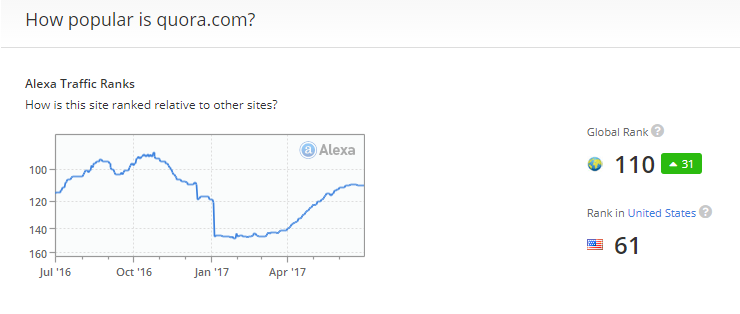
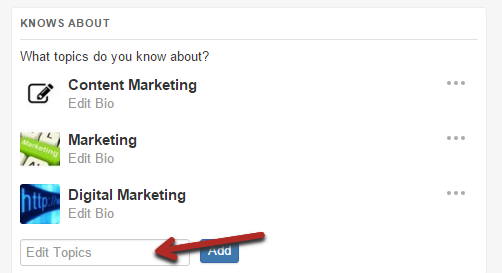

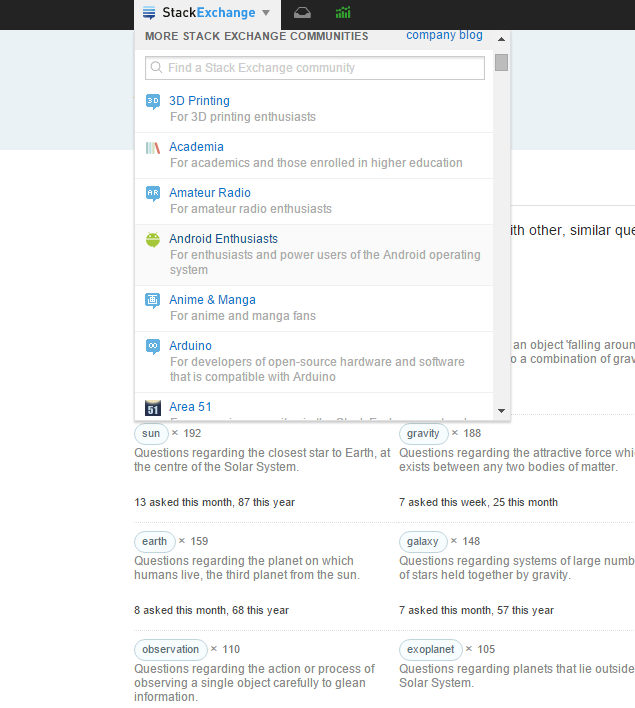
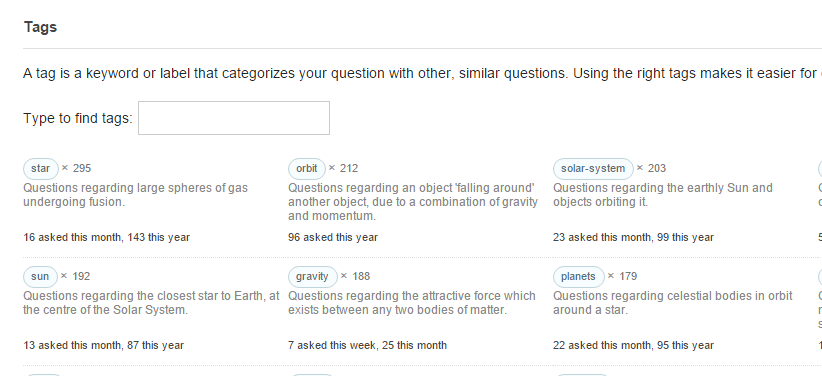

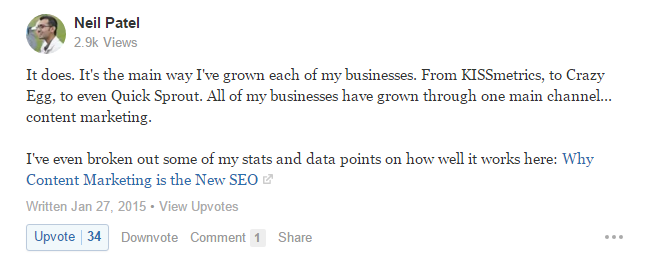
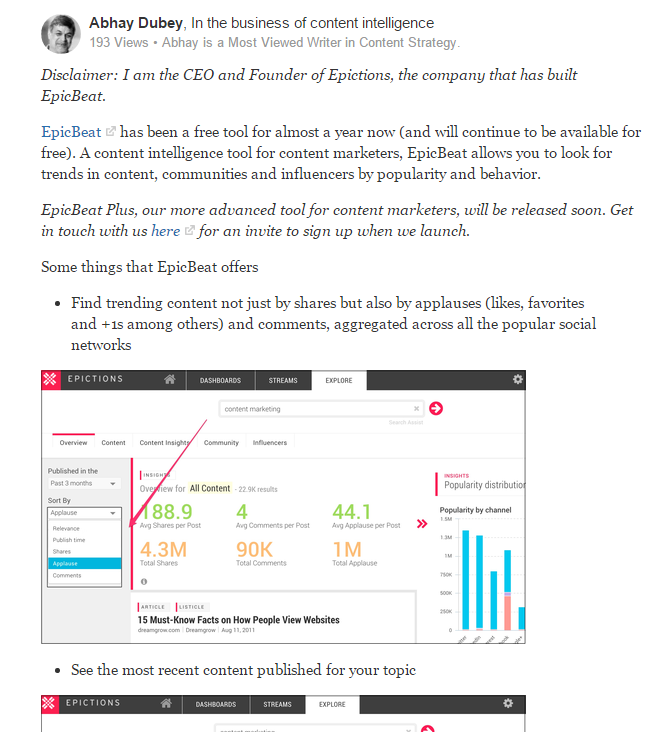
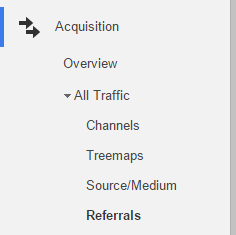
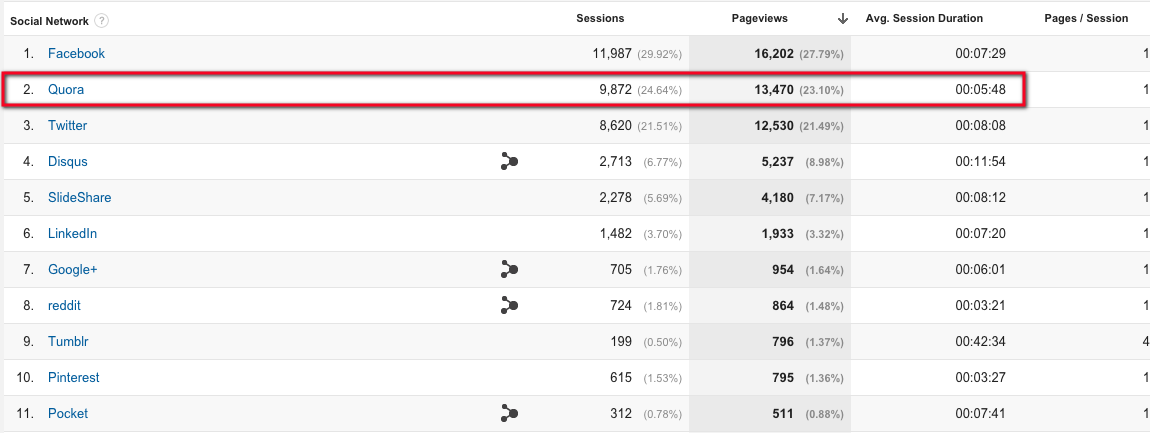
Comments (649)